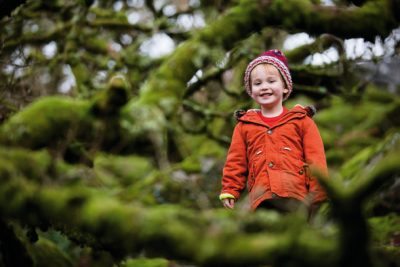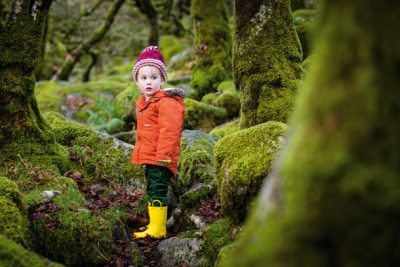Portraits in the Woods
A walk in the woods offers plenty of opportunities for great portraits, especially if you have kids in tow. The landscape of the forest throws up a pleasing array of colours, organic shapes and varying light that can be used to the portrait photographer’s advantage.
We went to Wistman’s Wood in Dartmoor, England, for our shoot here. This atmospheric forest of stunted oak trees in the heart of the Devon is a great place to shoot your portraits. But no matter what type of forest you choose for your shoot, they all share certain features that can make for a variety of interesting compositions for your portraits.
With shots of people in woods, there’s always a danger that the frame can get too busy. A wide expanse of trees may be pleasing on the eye, but when it comes to portraits, an overload of detail can be to the detriment of the subject.
The key here is to find ways to simplify the scene and draw the eye in towards your subject. In this tutorial, we’ll explain a few ways in which this can be done.
You could, for example, use a wide aperture for a shallow depth of field so that the foreground and background branches are blurred. Or you could compose the frame so that the surroundings work in harmony with the subject.
Useful compositional tricks, such as the ‘rule of thirds’ and ‘frames within frames’ are a big help, as they can help you to visualize a tangled mess of branches into an arrangement that works for your portraits. With a little practice, these skills soon become second nature…
Use natural frames
One great compositional trick is to create a frame within your frame by seeking out natural frames that surround your subject. Look for branches or boughs that create natural holes to shoot through.

Create a sense of depth
Creating depth in your portraits is a great way to add to the atmosphere, and helps to lead the eye towards your subject. Find an angle that includes out-of-focus details in the foreground as well as the background.

Look for the light
Under a canopy of branches there is a lot of variation in the light, even on a flat cloudy day. If the face is in shadow, look for another angle or ask them to turn towards the light for better illumination.

Think colour coordination
Choose outfits with blocks of colour that contrast with the surroundings. Stay away from greens, browns or any other camouflage. Warm colours, like orange and red, are opposite to cool colours, like green and blue.
Look for monochrome patterns
Trees and branches form wonderful web-like patterns, so look for parts of the scene to show this off. There’s a danger of the frame looking too busy, but you can simplify things with a punchy mono conversion.
Find a dramatic angle
Get down low and use a wide lens to find an angle that lets you include the canopy in the frame. Position your subject so they’re framed neatly with the scene, and watch for branches that stick out from the head.

Final Tip: Auto ISO for woodland portraits
For a simple exposure setup for woodland portrait, do this: set your DSLR to manual exposure mode and then set ISO to Auto. You can now choose a shutter speed and aperture while the camera works out an ISO to suit.
We need a fast shutter speed of at least 1/250 sec for handheld portraits, especially when using longer focal lengths. Light levels can be quite low under tree cover, so a wide aperture, like f/4 or f/2.8, will not only give you a shallow depth of field, but also let you shoot in lower light without having to push the ISO too hard.
Over the course of a year, or even a day, the forest offers a wide gamut of light, mood and colour. For example, under a thick canopy of leaves in early summer the light levels will be dramatically lower than on a clear winter day, and the colour of light, filtered through the leaves, will be green. So it’s worth thinking about the ideal times to go out and shoot portraits.
If you want colourful portraits of children, then a patch of flowers or bluebells in spring could be perfect, whereas if you’re going for something more moody, a night-time winter shoot with a bit of fill-flash might be ideal.